So I'm a pretty inexperienced led user/ fabricator. Can anyone offer their advice on a quality low heat driver to power my 2 qb120s?
Navigation
Install the app
How to install the app on iOS
How To Use Progressive Web App aka PWA On 420 Magazine Forum
Note: This feature may not be available in some browsers.
More options
You are using an out of date browser. It may not display this or other websites correctly.
You should upgrade or use an alternative browser.
You should upgrade or use an alternative browser.
Rider's first foray into LED strip lighting: Samsung H Series GEN3
- Thread starter
- #242
Rider509
Well-Known Member
With 8 CXB3590s.
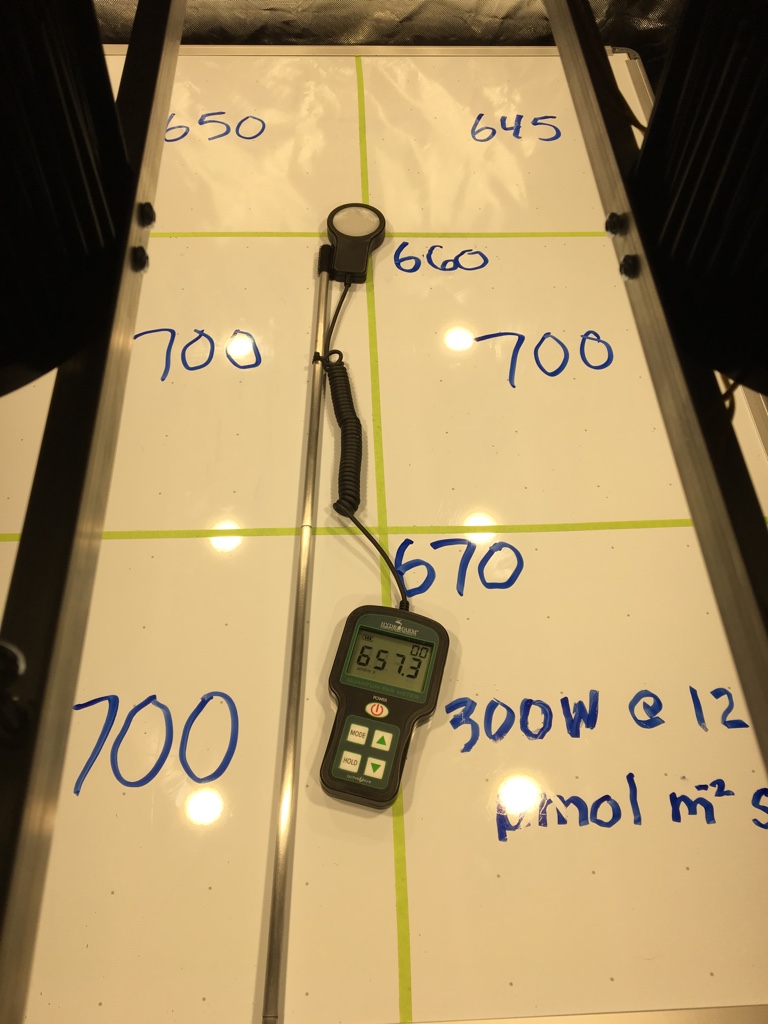

- Thread starter
- #243
Rider509
Well-Known Member
So I'm a pretty inexperienced led user/ fabricator. Can anyone offer their advice on a quality low heat driver to power my 2 qb120s?
From the HLG website:
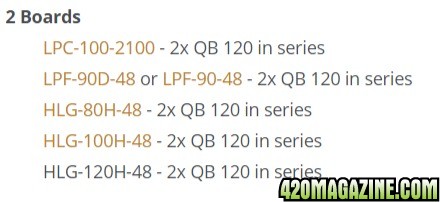
gotrice007
420 Member
Thanks Rider,
Is that for a 2x3 reading.
Also what driver your using for cobs?
Is that for a 2x3 reading.
Also what driver your using for cobs?
- Thread starter
- #245
Rider509
Well-Known Member
It looks like the CXBs edge the Samsungs slightly. What the hell. I went off what the Kill-A-Watts showed being pulled from the wall but they're not necessarily exactly 300W at the lights. Regardless, the Samsung build is WAY less expensive. US$350 vs US$750 if you were to buy two GrowMau5 kits.
- Thread starter
- #246
Rider509
Well-Known Member
Thanks Rider,
Is that for a 2x3 reading.
Also what driver your using for cobs?
Yes, it's the size of that white board.
I'm using HLG-320H-C2100Bs on each group of four, dimmed down to 150W for each group for this test. In my last grows I was running two groups at 200-250W each on one side of a 4x4 and a 600W HPS on the other side with CO2 supplementation before I had to chop everything down. Never even got to fire up the other two groups of four COBS in the grow.
gotrice007
420 Member
It looks like the CXBs edge the Samsungs slightly. What the hell. I went off what the Kill-A-Watts showed being pulled from the wall but they're not necessarily exactly 300W at the lights. Regardless, the Samsung build is WAY less expensive. US$350 vs US$750 if you were to buy two GrowMau5 kits.
Yeah the cobs with a slight edge but we can always make it up bringing the samsungs closer. The samsung price and heat/effiiciency clearly a big advantages over the cobs.
The only concern is how deep of a penetration can the samsung be. How much is the drop off from 12" to 18" and how much ppfd from 12" to 8".
Growmau5 youtube par test from 12" is 900-1100 ppfd and at 22" is 700-900. Being 10 inches out with only 200 drop off is a great penetration for the cobs.
What would Samsung be in term of penetration?
- Thread starter
- #248
Rider509
Well-Known Member
500W. The voltage drop through the 20ga jumper between the F564Bs is apparent. I'll have to rectify that with heavier wire.
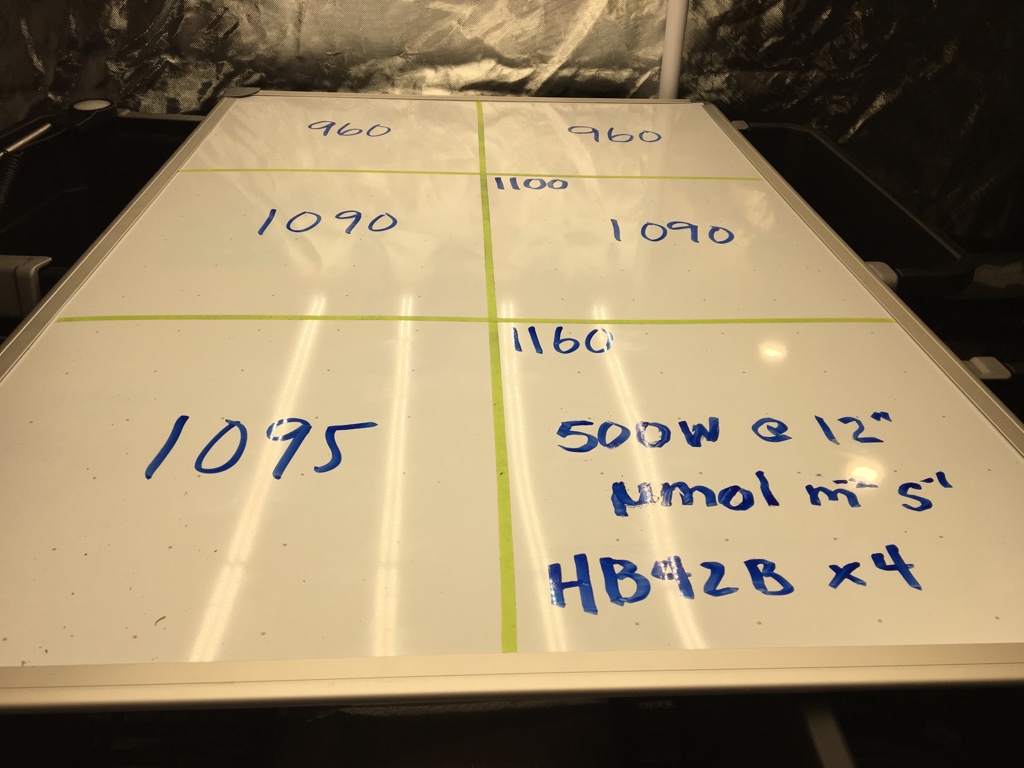
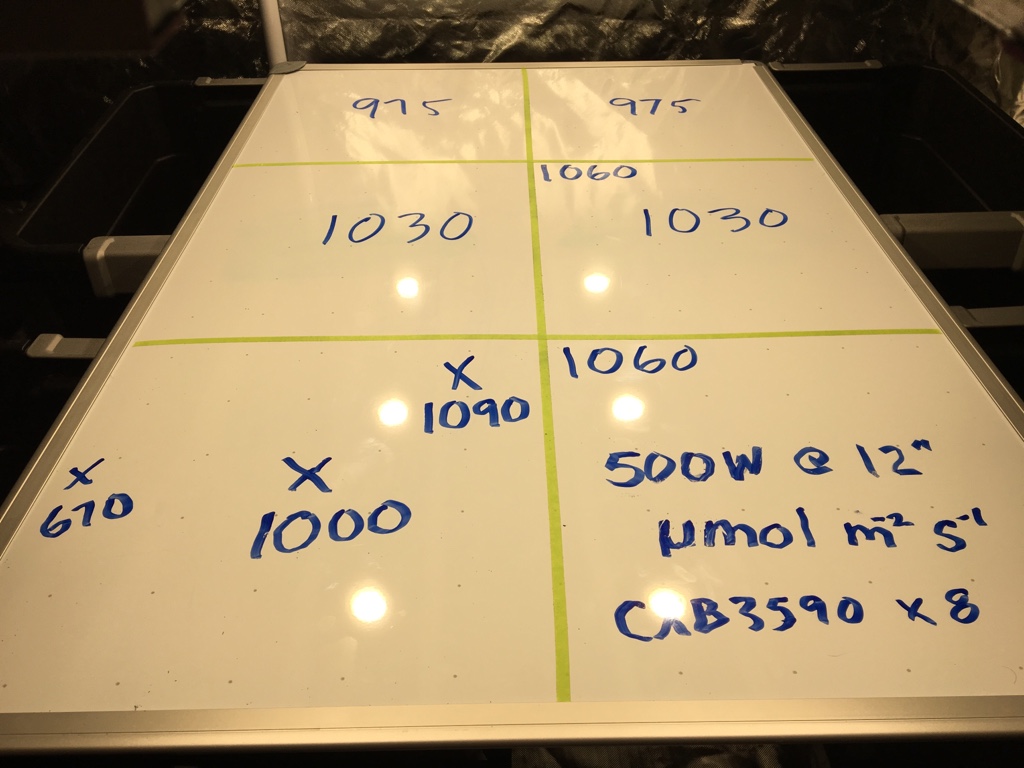


Scrogdawg
Well-Known Member
The COB's fall off near the edge to 670. Can you get a reading from the Samsungs at the same place?
- Thread starter
- #250
Rider509
Well-Known Member
What would Samsung be in term of penetration?
Not the foggiest!
Yeah the cobs with a slight edge but we can always make it up bringing the samsungs closer. The samsung price and heat/effiiciency clearly a big advantages over the cobs.
The only concern is how deep of a penetration can the samsung be. How much is the drop off from 12" to 18" and how much ppfd from 12" to 8".
Growmau5 youtube par test from 12" is 900-1100 ppfd and at 22" is 700-900. Being 10 inches out with only 200 drop off is a great penetration for the cobs.
What would Samsung be in term of penetration?
Greater dispersion should increase "penetration". It's more about the canopy getting light from many angles, than it is about the "intensity" of each diode. A lot of people think 5 watt diodes penetrate better than 3 watters - they don't.
A drop of 20% from 12" to 20" is phenomenal to begin with!

- Thread starter
- #252
Rider509
Well-Known Member
The COB's fall off near the edge to 670. Can you get a reading from the Samsungs at the same place?
The Samsungs are pretty much uniform, probably due to the leds being closer to the edge. There's still some drop off but not nearly as drastic as the 3590s that are run in the middle of each 1x4 area.
- Thread starter
- #253
Rider509
Well-Known Member
I picked up 10 and my driver should be in on Thursday. I'll get my frame together this weekend and then let the Sun shine in qb120's rock
DERBYBUD! Let's see your build!
Got my 120s today . Will order drivers at the beginning of next month and flip the girls as soon as the build is complete.
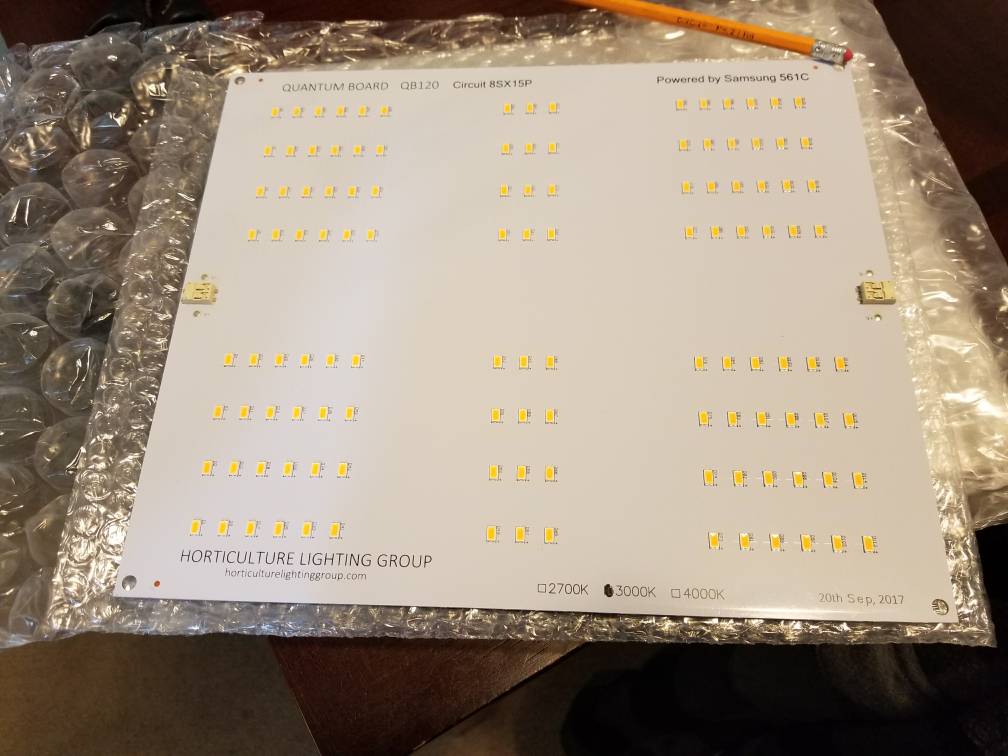

Derbybud
Well-Known Member
So I would by now but went to hook it up and blew my driver. I have a new one coming tomorrow and will post on Wednesday. I'm thinking my Drok meter went bad as it made a sizzle sound then pop went the driver. I'm going to hook the new one up without the meter and see if that is it. Costly and I don't really know the problem yet. All wires were connected correctly but still a problemDERBYBUD! Let's see your build!
Derbybud
Well-Known Member
Yeh I'm hoping this works out as it was a easy build that I will build again. Just thinking a $14 meter bit me in the ass
Dr Fish
Well-Known Member
This is simple cut/paste, I could never explain it this well..
Light and other electromagnetic radiation
The intensity (or illuminance or irradiance) of light or other linear waves radiating from a point source (energy per unit of area perpendicular to the source) is inversely proportional to the square of the distance from the source; so an object (of the same size) twice as far away, receives only one-quarter the energy (in the same time period).
In photography and stage lighting, the inverse-square law is used to determine the "fall off" or the difference in illumination on a subject as it moves closer to or further from the light source. For quick approximations, it is enough to remember that doubling the distance reduces illumination to one quarter, the inverse square rule is often still a useful approximation;
Light and other electromagnetic radiation
The intensity (or illuminance or irradiance) of light or other linear waves radiating from a point source (energy per unit of area perpendicular to the source) is inversely proportional to the square of the distance from the source; so an object (of the same size) twice as far away, receives only one-quarter the energy (in the same time period).
In photography and stage lighting, the inverse-square law is used to determine the "fall off" or the difference in illumination on a subject as it moves closer to or further from the light source. For quick approximations, it is enough to remember that doubling the distance reduces illumination to one quarter, the inverse square rule is often still a useful approximation;
But the inverse square rule doesn't seem to work worth a crap in tents with multiple light sources. 
Fanleaf measured a dropoff of only 1/2 at twice the distance, for instance. It's gotta be the multiple sources.
Hence my fixation with dispersion.

Fanleaf measured a dropoff of only 1/2 at twice the distance, for instance. It's gotta be the multiple sources.

Hence my fixation with dispersion.

Dr Fish
Well-Known Member
I guess the first proton bounce in a tent does make a difference...
Dr Fish
Well-Known Member
Lacking a tent this is what i did to keep as much light on my led grow as i could.... The closer the reflective surface, the more light is saved...
Don't mean to be jacking your thread Rider....
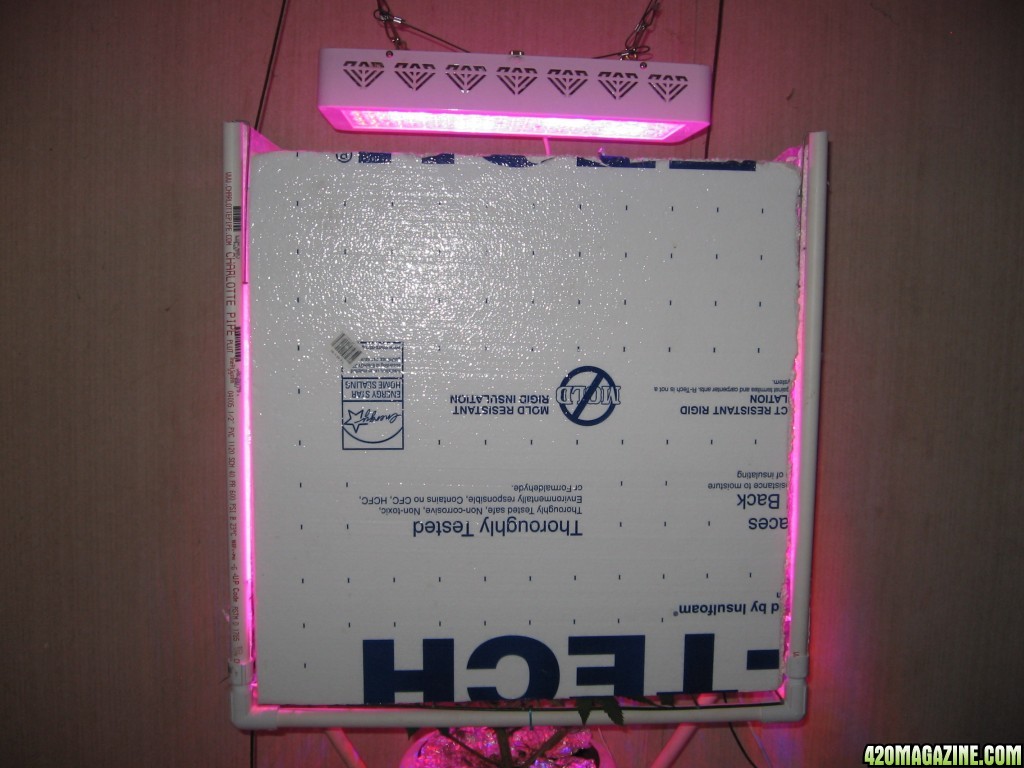
Don't mean to be jacking your thread Rider....


